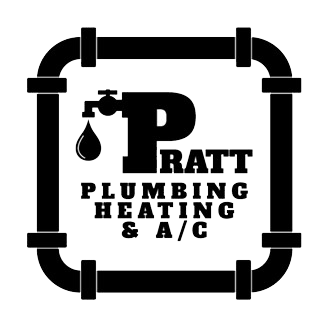Steve Hopper • January 24, 2025
Steve Hopper • January 24, 2025
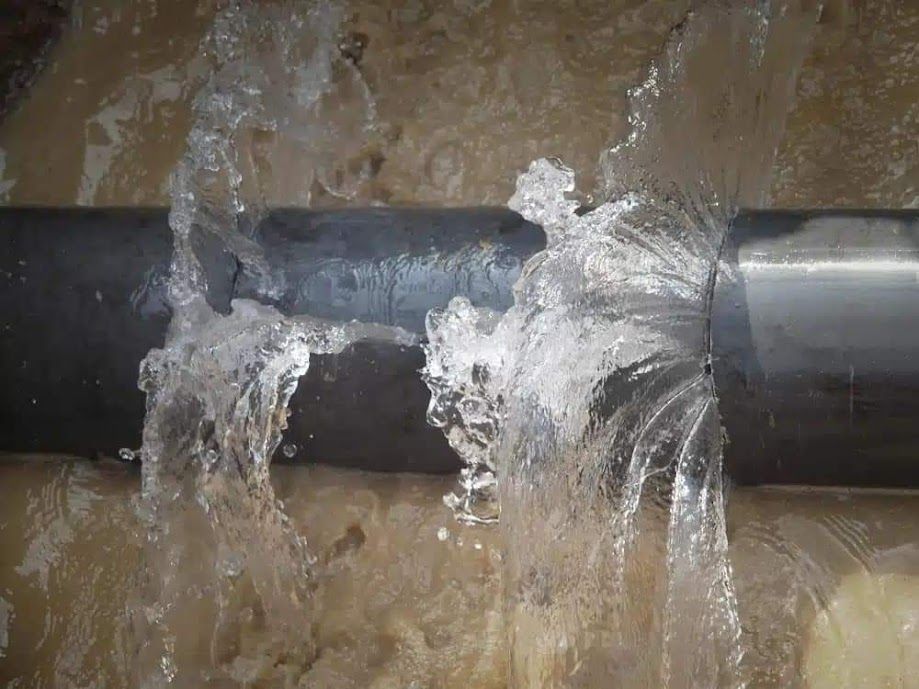
As winter rolls in and the temperatures plummet, the risk of frozen pipes becomes a major concern for homeowners. A burst pipe can cause significant damage, from flooding to expensive repairs, and often occurs when pipes freeze and expand. The good news is that there are several preventative measures you can take to protect your pipes from the chill of winter. Here are some helpful hints to ensure your pipes stay safe, even in the coldest months.
1. **Insulate Vulnerable Pipes**
Certain areas in your home are more susceptible to freezing, such as pipes in attics, basements, garages, or crawl spaces. To protect them, you can insulate these pipes with foam pipe insulation or heat tape. Insulation helps maintain the temperature of the pipes, preventing them from getting too cold. Pay special attention to areas of your home that are poorly insulated or exposed to the elements.
**Tip**: For heat tape, make sure to choose one that is suitable for the specific type of pipe (PVC, copper, etc.) and follow the manufacturer's instructions for installation.
2. **Seal Drafts and Gaps**
Cold air can easily sneak into your home through gaps around windows, doors, and vents. These drafts can lower the temperature around your pipes, especially those near exterior walls. Sealing these gaps with caulk or weatherstripping can significantly reduce the risk of pipes freezing.
**Tip**: Don’t forget to inspect areas where pipes enter or exit the house (such as where they connect to the outdoor faucet) for potential drafts.
3. **Let Faucets Drip**
When temperatures drop, allow a slow drip of cold water to flow through faucets, especially those located in colder areas of your home (like unheated basements or exterior walls). Even a small flow of water can prevent pipes from freezing by keeping the water moving. It’s a simple step that can save you a lot of headaches in the long run.
**Tip**: If you have multiple faucets on exterior walls, let them all drip to prevent strain on one pipe.
4. **Keep Interior Doors Open**
If you have pipes located in cabinets or behind walls that are close to exterior walls, open interior doors (such as those under the sink or in closets) to allow warm air to circulate around the pipes. This will help keep the temperature around your pipes higher and reduce the likelihood of freezing.
**Tip**: If you have a bathroom or kitchen sink in an exterior wall, keep the cabinet doors open at night to allow warm air in.
5. **Maintain a Consistent Temperature**
When the weather forecast predicts freezing temperatures, it’s important to keep your home at a consistent temperature, even if you’re not at home. Setting your thermostat to at least 55°F (13°C) is a good rule of thumb, even if you’re away for the weekend. Cold snaps can cause rapid temperature changes in your home, which increases the risk of pipes freezing.
**Tip**: Use a smart thermostat to monitor and control your home’s temperature even when you're not there.
6. **Drain Outdoor Pipes and Faucets**
Before winter hits, be sure to drain any outdoor pipes, hoses, and faucets. Disconnect and drain hoses, and shut off the water supply to outdoor spigots. If your outdoor faucets are exposed to the elements, you can use insulated covers to protect them from freezing temperatures.
**Tip**: If your home has a sprinkler system, be sure to have it winterized by a professional to prevent damage.
7. **Use Space Heaters for Extra Protection**
If you know a section of your home is prone to colder temperatures (such as a basement or garage), consider using a space heater to provide extra warmth. This can help maintain a safe temperature around your pipes and prevent them from freezing. Just make sure to use heaters safely and follow all manufacturer guidelines to avoid fire hazards.
**Tip**: Always turn off space heaters when you leave the room, and never use them near flammable materials.
8. **Know the Location of Your Main Water Shutoff Valve**
In case of an emergency, it’s essential to know the location of your home’s main water shutoff valve. If a pipe does freeze and burst, you’ll need to turn off the water supply immediately to minimize flooding and water damage. Familiarizing yourself with the shutoff valve now can save valuable time during an emergency.
**Tip**: If you live in a particularly cold climate, it’s a good idea to mark the location of the shutoff valve with a sticker or label so that everyone in your household knows where it is.
9. **Consider a Plumbing Inspection**
Before the deep freeze sets in, have a professional plumber inspect your plumbing system. A plumber can identify weak spots in your pipes that may be more prone to freezing, such as areas with poor insulation or outdated piping materials. They may also recommend additional preventative measures, such as installing pipe heating cables or upgrading insulation in certain areas.
**Tip**: Regular maintenance and early inspection can help catch issues before they become serious problems.
Conclusion
Frozen and burst pipes are preventable with a little preparation and awareness. By insulating your pipes, sealing drafts, and keeping your home at a consistent temperature, you can significantly reduce the risk of water damage this winter. Taking these simple steps can save you time, money, and stress, ensuring your home stays safe and dry throughout the colder months.
Have any additional tips to share? Feel free to leave them in the comments below! Stay warm and stay safe this winter!
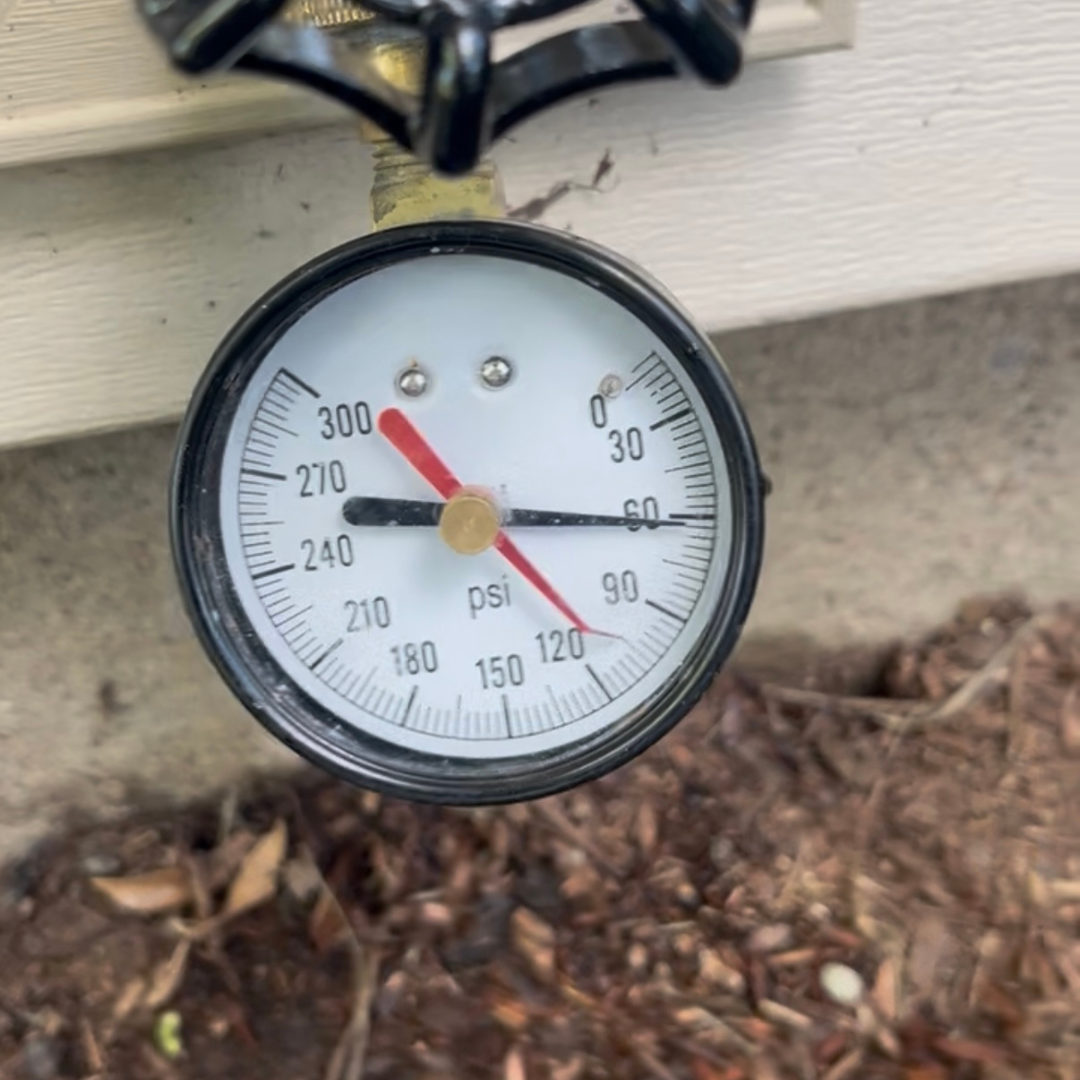
If you live in Bergen County, NJ you might be experiencing high water pressure in your home without even realizing it. While strong pressure may not seem like a bad thing, it can actually lead to serious plumbing problems, higher utility bills, and long-term damage to your home. We’ll explain what causes high water pressure, how it affects your home, and how our expert plumbing team can help fix it fast and reliably. What Is Considered High Water Pressure? Water pressure is measured in pounds per square inch (PSI). The ideal range for residential homes is typically between 40 and 60 PSI. If your home’s water pressure exceeds 80 PSI, it’s considered too high and can begin to put stress on your plumbing system. Common Causes of High Water Pressure in Bergen County There are several reasons why homes in towns like Teaneck, Fair Lawn, and Wyckoff may experience excessive water pressure: Municipal supply systems – Towns often increase water pressure to serve large buildings or nearby commercial zones, especially in Bergen County. Elevation shifts – Homes at lower elevations may receive stronger water pressure due to gravity. Proximity to fire hydrants – Properties near hydrants or industrial areas may receive higher pressure than average. Aging or failed PRVs – Many homes have old or faulty pressure-reducing valves that fail to regulate incoming pressure. The Risks of High Water Pressure Unchecked high water pressure can lead to a variety of issues, including: Leaky Pipes & Fixtures – Excessive force can weaken seals, causing leaks behind walls or under sinks. Appliance Damage – Water heaters, dishwashers, washing machines, and even toilets wear out faster under extreme pressure. Pipe Bursts – Over time, constant pressure can rupture pipes, especially older copper or galvanized steel lines. Higher Utility Bills – Increased water flow means more water use, whether you realize it or not. Water Hammer – That loud banging noise when you turn off a faucet is often caused by high pressure slamming against closed valves. How We Fix High Water Pressure in Bergen County Homes At Pratt Plumbing, we specialize in diagnosing and solving high water pressure problems across Bergen County. Our process includes: Professional Pressure Testing We use accurate pressure gauges to determine your home’s PSI and identify problem areas. Inspection of Your PRV (Pressure-Reducing Valve) If you already have a PRV, we’ll test it to ensure it’s functioning properly. If not, we’ll recommend installation. PRV Installation or Replacement We install modern, adjustable pressure-reducing valves that protect your entire home from excessive force. System Monitoring & Ongoing Support We can schedule regular check-ups or include pressure checks as part of our annual maintenance service. Schedule Your Water Pressure Check Today If you live in Bergen County, NJ, and suspect your water pressure is too high, don’t wait for costly damage to occur. Our licensed, local plumbers are ready to help. Contact us for more information.
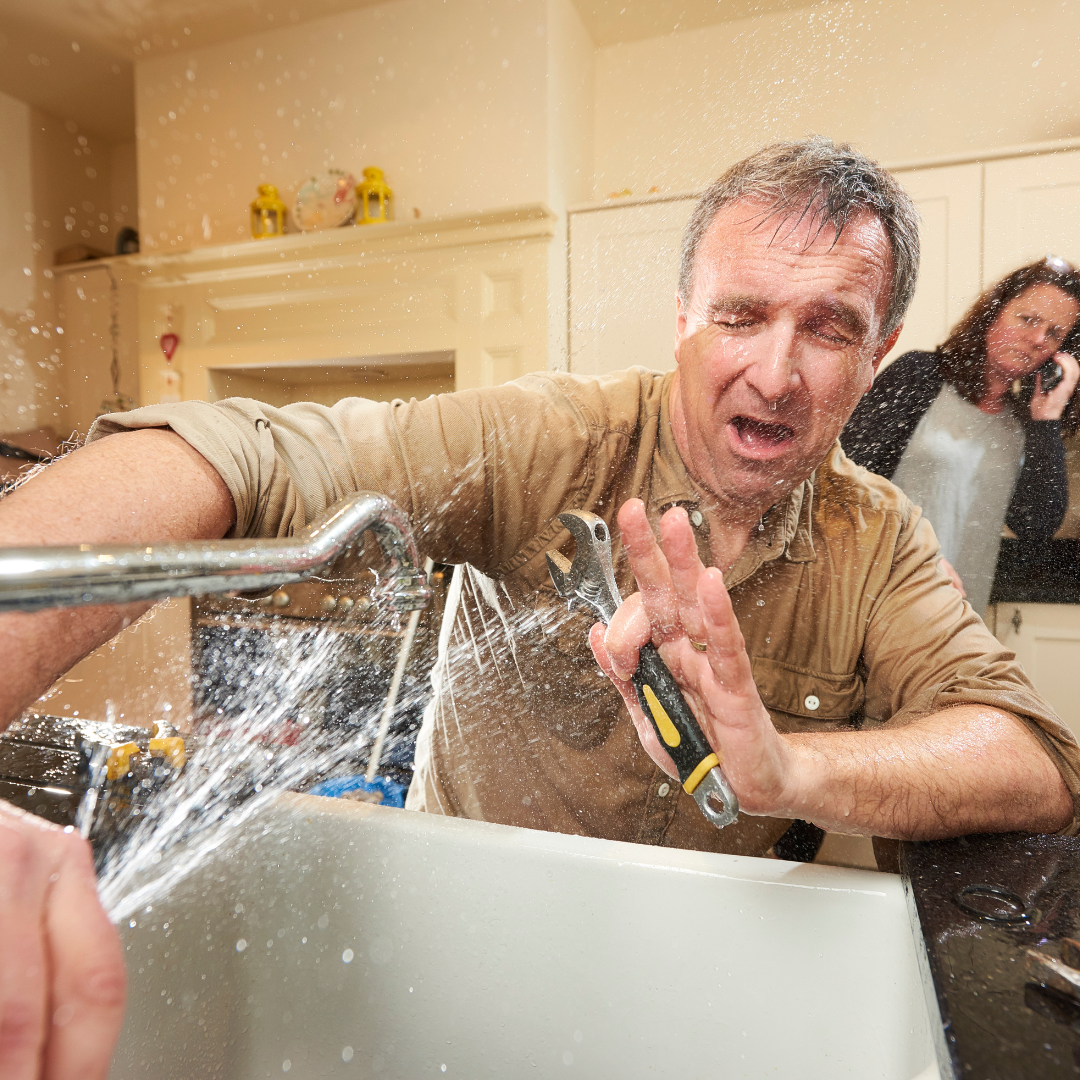
Trying to save money with a DIY plumbing fix? You're not alone. While we’re all for being handy around the house, some common plumbing mistakes can cost you much more in the long run. Here are the top 10 mistakes we see homeowners make, and how our licensed Bergen County plumbers fix them the right way. 1. Over-Tightening Pipe Fittings The DIY mistake: Cranking pipe connections too tight, thinking it prevents leaks. Why it’s a problem: Over-tightening can crack fittings or strip threads, leading to leaks or even full blowouts. How we fix it: Our team uses proper torque and high-quality thread sealants to ensure a snug, leak-free connection without any damage. If you're in towns like Westwood, Park Ridge, or Hillsdale, we've fixed this more times than we can count. 2. Using the Wrong Type of Pipe The DIY mistake: Mixing incompatible materials (like copper and galvanized steel) or using PVC where it shouldn’t be. Why it’s a problem: It can cause corrosion, leaks, or code violations. How we fix it: We identify the correct material for the application and use proper transition fittings to keep everything safe and up to New Jersey plumbing code standards. 3. Relying Too Heavily on Drain Cleaners The DIY mistake: Pouring chemical drain cleaners down the sink regularly. Why it’s a problem: These chemicals can eat away at your pipes over time and they rarely fix the root issue. How we fix it: We use mechanical drain cleaning tools or hydro-jetting to safely and effectively clear blockages for good. Many Bergen County homeowners call us after the store-bought cleaners fail to solve recurring clogs. 4. Forgetting to Shut Off the Water The DIY mistake: Starting a repair without turning off the water supply. Why it’s a problem: Even a small plumbing job can turn into a mess if water is still running, leading to damage, delays, and frustration. How we fix it: Our techs always locate and shut off the correct valves before beginning any work. We also go a step further by tagging important shut-off valves for your convenience and so our team (or any future technician) knows exactly where to look next time. 5. Replacing a Toilet Without Leveling or Sealing It Properly The DIY mistake: Swapping out a toilet without properly seating the wax ring or leveling the base. Why it’s a problem: Can lead to leaks, rocking toilets, or water damage to the subfloor. How we fix it: We secure the flange, set the toilet with a new wax ring, and level it precisely to ensure long-term reliability. We’ve handled this fix countless times in Oradell, Woodcliff Lake, and River Vale homes. 6. Poor Soldering on Copper Pipes The DIY mistake: Inconsistent or weak solder joints on copper piping. Why it’s a problem: Bad soldering can lead to slow leaks that go unnoticed for months. How we fix it: Our licensed Bergen County plumbers clean, flux, and properly heat every joint to ensure strong, watertight connections. 7. Using Mismatched Trap Assemblies The DIY mistake: Improvising sink drain traps using a mix of parts from big box stores. Why it’s a problem: Poor seals and awkward angles often lead to slow leaks and foul odors. How we fix it: We custom-fit traps using the correct diameter, materials, and angles to ensure a clean, airtight seal, especially important in older homes throughout Bergen County. 8. Covering Up Leaks With Tape or Epoxy The DIY mistake: Using tape or epoxy to “patch” leaks instead of fixing the source. Why it’s a problem: These are short-term band aids that often make things worse later. How we fix it: We replace the faulty section, not just cover it up, ensuring lasting repairs and peace of mind. 9. Ignoring Slope on Drain Pipes The DIY mistake: Installing horizontal drain lines without the correct downward slope. Why it’s a problem: Wastewater doesn’t drain properly, leading to clogs and backups. How we fix it: We ensure all new drains have the proper pitch (typically 1/4" per foot) to keep everything flowing smoothly. 10. Misdiagnosing the Problem Entirely The DIY mistake: Thinking a slow drain is just hair buildup when it’s actually a damaged main line. Why it’s a problem: You waste time and money on the wrong fix while the real issue worsens. How we fix it: We perform thorough diagnostics, including camera inspections, so we treat the true cause, not just the symptoms. Leave It to the Pros DIY can be satisfying and cost-effective. But when it comes to plumbing, what seems simple can quickly spiral into a costly, damaging mistake. If you're dealing with any plumbing issues, or if you've hit a dead end with your own repair, we're just a call or text away, serving Bergen County homes in Park Ridge, Woodcliff Lake, River Vale, and beyond.
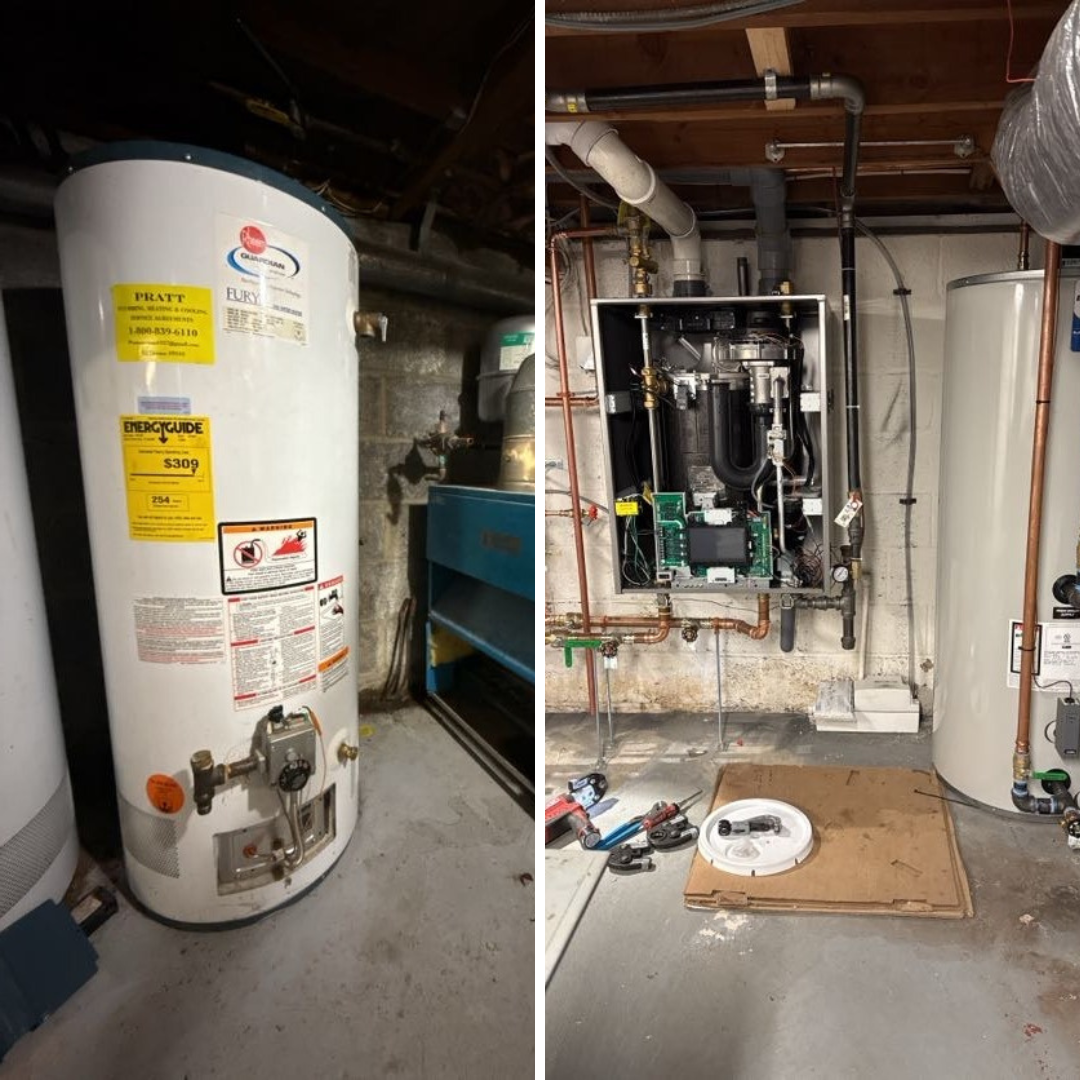
As summer approaches, your home’s hot water system might not be on your mind, but it should be. Between extra showers, more laundry, outdoor cleanups, and hosting guests, hot water demand naturally increases during warmer months. If your water heater is over 10 years old, taking longer to heat up, or showing signs of rust or small leaks, now is the perfect time to consider a replacement. Waiting until it breaks could mean no hot water during a busy summer weekend, or worse, a leak that causes damage to your home. Replacing it ahead of time avoids the hassle and gives you peace of mind all season long, especially for families in busy Bergen County boroughs. At Pratt Plumbing & Heating, we offer a completely free plumbing inspection for all Bergen County homeowners. We’ll take a close look at your water heater and overall plumbing system, and give you straightforward, honest advice. If it still has life left in it, we’ll tell you. If a replacement is needed, we’ll walk you through the options, pricing, and help you choose the right solution for your home and budget. Newer water heaters are not only more reliable, they’re also far more energy efficient, which can help reduce your monthly utility costs. We make the process simple and stress-free. Call or text us anytime at 201-666-8400 to schedule your free inspection. Even if you're not sure whether your system needs replacing, a quick visit from our team can give you the clarity you need. Don’t wait until you’re dealing with cold showers or a costly emergency, get ahead of the issue and enjoy a worry-free summer with hot water you can count on.

A flooded basement is every homeowner’s nightmare. Not only can it cause costly damage to your foundation, flooring, and personal belongings, but it can also lead to dangerous mold growth, and in some cases, structural issues. Preventing water from entering your basement starts with the right tools and proactive measures. Two key components in preventing a flooded basement are installing a Moen Pro Control system and ensuring your sump pump is working properly. These systems help you monitor and address water-related issues before they spiral out of control. Here’s why and how these systems can protect your basement. Why a Moen Pro Control System Matters The Moen Pro Control system offers a level of automation and monitoring that can significantly reduce the risk of a flooded basement. This smart water shut-off system allows you to detect leaks, manage water flow, and control the water in your home remotely. Key Features of Moen Pro Control: Real-Time Leak Detection: Moen Pro Control helps you spot leaks early, even in areas you might not have easy access to, such as behind walls or under floors. This proactive approach can help you avoid the water damage that leads to a basement flood. Remote Control: Using a smartphone app, you can control water flow in your home from anywhere, meaning that if you’re out of town or at work and a potential leak or flood is detected, you can take immediate action. This peace of mind is invaluable for preventing serious damage. Automatic Shut-Off: One of the best features of Moen Pro Control is the automatic shut-off valve. If a leak or flooding is detected, the system automatically shuts off the water supply, preventing further water from entering your home. This can be a life-saver if you are away from home when a disaster strikes. Notifications & Alerts: With this system, you’ll receive notifications via your phone in real-time if a problem arises. This means you're always in the loop and can take quick action to avoid a flooded basement or other serious damage. The Importance of a Working, Tested Sump Pump Your sump pump plays a crucial role in keeping your basement dry. It removes excess water that gathers in a sump basin, typically located in the lowest part of your basement or crawlspace. Without a properly functioning sump pump, water can quickly accumulate and cause flooding. Key Tips to Ensure Your Sump Pump is Ready: Test Your Sump Pump Regularly: Testing your sump pump periodically (especially during heavy rain or snowmelt seasons) is essential. Pour a bucket of water into the sump pit to check if the pump activates and discharges water as expected. Make sure it runs smoothly and that the discharge pipe is clear of debris. Inspect the Check Valve: The check valve prevents water from flowing back into the sump pit once it's been pumped out. Check that it is functioning properly to avoid the backflow of water into your basement. Clear Debris Over time, debris, dirt, and leaves can clog the sump pump and the drainage system. Regularly inspect and clear any blockages to ensure optimal performance. Consider a Backup Pump: Power outages during storms can render your sump pump useless. A battery-powered backup sump pump ensures your basement remains dry even when the power goes out. How Moen Pro Control and a Sump Pump Work Together While both the Moen Pro Control system and your sump pump play distinct roles in protecting your basement, together they form a powerful defense against flooding. 1.Early Leak Detection: Moen Pro Control can detect water leaks in your home, including near your sump pump or in places where water might gather. It can notify you immediately so you can take action, such as ensuring your sump pump is functioning properly. 2. Prevent Overflows: If the water level in your sump basin rises too high due to excessive rain or drainage problems, Moen Pro Control can alert you of potential issues, allowing you to monitor the situation and ensure that your pump is keeping up with the water flow. 3. Remote Monitoring: You can use the Moen Pro Control system to manage your water supply and remotely turn off your home’s water flow. If there’s a risk of flooding in an area away from the sump pump, you can cut off the water supply to prevent further complications. Additional Basement Flood Prevention Tips While Moen Pro Control and a sump pump are great tools, here are a few extra tips to fully protect your basement from water damage: Check Your Gutters and Downspouts: Make sure your gutters are clean and in good working order. Downspouts should direct water away from your foundation to prevent it from seeping into your basement. Maintain Proper Grading Around Your Home: Ensure the ground slopes away from your foundation. This will keep water from pooling around the base of your home and potentially seeping into the basement. Install a French Drain: If your basement is particularly prone to flooding, consider installing a French drain to channel water away from the foundation. Waterproofing Your Basement: If you live in an area with heavy rainfall or snowmelt, consider sealing your basement with waterproofing materials to prevent moisture from seeping through the walls. Conclusion Flooded basements are a serious issue, but with the right preparation, you can protect your home from costly damage. Installing a Moen Pro Control system and ensuring your sump pump is functioning properly are two of the most effective ways to keep your basement dry and safe. Add in a few preventative maintenance steps, and you’ll be well on your way to safeguarding your home against water damage. Taking these precautions doesn’t just prevent floods it gives you peace of mind knowing your basement is secure, even when you’re not home to monitor it. Stay proactive, test your systems, and don’t wait for disaster to strike.

